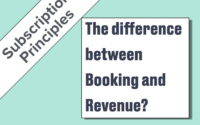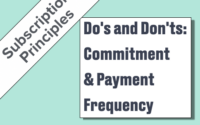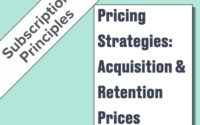Gamification as a Retention Method
1. What is gamification? 🎮
Gamifying a website, application, or service involves including fun elements to encourage customers, subscribers, or users to complete actions or tasks and thus spend more time with the product.
Fun elements can include points, levels, badges, rewards, games, challenges, gifts, or leaderboards. Sharing achievements on social media enhances gamification. 📱🎉
2. What are the different types of gamification? 🤔
Although the goal is to encourage customers to complete tasks, the intensity and depth can vary. We can distinguish between the two extremes of the spectrum.
a. Finished gamification ✅
This is the basic level of gamification. For example, a website might tell you that your user profile is only 70% complete. This type of gamification encourages users to explore the site, activate more features, and provide additional personal information.
The goal here is to boost service usage and customer engagement. This gamification ends once all tasks are completed.
b. Unlimited Gamification ♾️
In contrast, unlimited gamification presents new challenges at every turn. For example, your Apple Watch encourages you to close the rings daily with monthly challenges and exclusive badges to collect. The number of tasks that can be completed is limitless.
The goal of this gamification is to keep users active every day. The goal is to increase customer engagement with the service.
3. What’s the point? 🎯
Game publishers like Call of Duty were pioneers in using gamification, especially in their online multiplayer modes. By offering rewards for completing challenging tasks, players spend long hours on the game, benefiting the publisher greatly:
- Customers get their money’s worth, as it may take them weeks, or even months, to complete all the challenges..⏳
- Players show off their badges like trophies, encouraging others to do the same. 🏆
- This helps maintain a large player base in the online multiplayer mode.
- As long as customers haven’t earned all their badges, they are less likely to switch to the competition.🔒
The ideal gamification approach would keep customers engaged until the release of the new game.
Gamification combines all the ingredients for customer loyalty:
- Customer satisfaction (high value for the price paid) 💰
- Engagement (time spent) ⏱️
- Community (team building, sharing on social media) 🌍
- Captive customer (time spent, transferability of rewards) 🔄
4. What impact does gamification have on retention? 🔄
As discussed in the article “Should I encourage my subscribers to use my service?“, encouraging customers to use the service as much as possible helps increase retention rates. Similarly, we see that returning customers or long-tenure subscribers tend to be more engaged than those who don’t renew or only make a single purchase. 🔄
Since usage and engagement rates are higher among loyal customers, it stands to reason that gamification will increase retention rates. However, there isn’t necessarily a direct, strong correlation between gamification and retention.
Gamification will certainly help increase retention rates. However, it’s important to distinguish between incremental increases and those that are game changers. ⚡️
In most cases, you’ll likely achieve a significant increase in retention by focusing on other factors such as payment methods, the quality of billing profiles, or the overall service quality, rather than relying solely on gamification. 💡
A customer renews their subscription primarily because the service is good, not because the gamification is well executed.
The Duolingo app is a prime example of gamification pushed to the point where the game itself becomes almost more prominent than the actual language learning. As the renewal date approaches, subscribers are more likely to base their renewal decision on their feelings about learning a foreign language, rather than on the desire to earn an owl badge. 🦉
Similarly, you can gamify LinkedIn as much as you want, but Premium subscribers won’t renew just because there’s a progress bar at 50% or 100%. 🔒
👉 Key Takeaways 👈
- Gamification helps increase service usage. 📊
- Extensive gamification increases customer engagement with the product as they spend more time on it. 🕒
- While increased usage and engagement can contribute to higher retention rates, gamification is not a guaranteed solution for improving retention. 🔑



